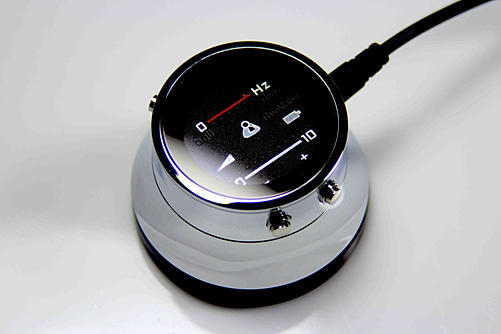Updated to reflect the latest status on Google Glass. Originally posted on Nov 24, 2014.
As technology continuously innovates how we deal with healthcare everyday, it’s vital that doctors stay up to date on new trends. Many of the latest gadgets not only provide great value but are also fun. Here’s our list of 10 tech gadgets for doctors to use at their practice:
In this article
1. Digital Stethoscope

The cold, hard stethoscopes that doctors use have now been greatly upgraded. Now, the digital stethoscope is one of the smallest, yet powerful stethoscopes in the world. It’s so small that it fits right in the palm of your hands but can amplify over 100 times. It’s plug and play compatible making it easy for doctors to hear via their headphones or earplugs. It also connects via smartphone, tablet, or computer to record info right into the patient’s EMR!
2. Google Glass

Google seems to have their hands in just about every new piece of technology. Google Glass is a wearable spectacle that’s perfect for many industries. Doctors can enjoy the ease of accessing their patients’ records, collaborating what they are viewing with other doctors via surgery, and checking patients’ vitals. Though Google halted sales of Glass on 15 Jan 2015, many vendors have created specialized software applications & continue to supply the device, and Google itself is reportedly working on a successor.
3. AV300 Vein Viewing System

Doctors can easily examine their patients closely with the AccuVein AV300 Vein Viewing System. This handy gadget makes viewing clumps and other issues with veins simple. It’s lightweight and small, so doctors can carry it around room to room. Since it doesn’t come in contact with the patient, it does not need a protective covering or to be sterilized.
4. EarlySense System

The EarlySense Proactive enables doctors and their medical staff to capture all a patients vitals in the exam room. Everything from their heart rate to their respiratory rate can be quickly captured and transferred to the EMR system. This not only reduces the time of transferring patient’s room to room, but also reduces mistakes of recording incorrect readings.
5. VScan by GE

Another helpful examination gadget is the GE VScan. The VScan is a pocket-sized ultrasound, allowing doctors to access many systems of the body including the abdominal, cardiac, urology, fetal, thoracic and others. This device helps speed decisions doctors normally would need to make after receiving x-rays. Unnecessary testing is also reduced.
6. Infrared Thermometer

Gone are the days of ten second readouts and probe-covers. Infrared thermometers now give accurate temperatures in one second, with no contact required. They are small and require just AAA batteries. These are perfect to use for fussy children. The Rediscan thermometer (pictured) can also measure the temperature of objects such as milk bottles or bath water.
7. Wacom Intuos

The Wacom Intuos system instantly converts what you write into a digitally readable format. It consists of a tablet which is basically a touch-sensitive pad (without a screen) and a stylus. Doctors can write clinical notes, prescriptions and draw directly on x-rays and charts. The information is digital, and can plug in directly into an EMR system. This method enables doctors to keep all data private as well, without paperwork lying around for others to see.
8. AliveCor ECG monitor

The AliveCor ECG system consists of a heart monitor device that connects to a smartphone app. Patients use it to record their ECG reading, which can be shared with their doctor and integrated into the PHR (patient health record). Doctors use the physician app to monitor patients’ ECGs remotely. The physician app can also analyse readings and detect aberrations like AF (atrial fibrillation) automatically. Doctors can view trends, act promptly in case of an emergency, and integrate the readings into the patient’s EMR from their end as well.
9. Fitbit

The famous Fitbit is an activity tracker and monitoring device that doctors can suggest to patients to stay fit. It provides motivational tips and helps patients lead a healthy lifestyle. Not only patients, but doctors can also use a Fitbit themselves and practice what they preach! There are many activity trackers on the market, and doctors must try out devices themselves to evaluate their efficacy.
10. Adheretech’s Smart Pill Container

Smart pill containers are not used directly by doctors, but they are an excellent way for doctors to monitor their patient’s prescriptions taken. These containers emit light and sound alerting patients when it’s time to take their medication. If the dosage is skipped, an alert is sent to the caregiver or patient.
A lot of these gadgets are not easily available in India, but you can definitely pick them up in your next visit abroad. Do share this post with your colleagues (and patients) if you found it useful!
Ravi
-and also Practo TAB.